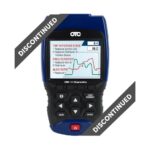Tesla vehicles are known for their advanced technology and innovative features. However, accessing their diagnostic data isn’t as straightforward as with traditional cars using a standard OBD2 port. If you’re searching for “Find Obd2 Tesla,” you might be surprised to learn that Tesla doesn’t use a traditional OBD2 port in the same way other vehicles do. This article delves into the complexities of accessing Tesla’s diagnostic data and what alternatives exist for those looking to “find obd2 Tesla” functionality.
Understanding Tesla’s CAN Bus System
Instead of a readily accessible OBD2 port for generic code readers, Tesla relies on a Controller Area Network (CAN) bus system. This network of interconnected modules communicates using unique CAN IDs and messages. Decoding these messages is key to understanding the vehicle’s status and diagnosing potential issues. While a physical OBD2 port might exist in some Teslas, its functionality is often limited for general users.
Decoding Tesla CAN IDs: A Collaborative Effort
Efforts to decode Tesla’s CAN bus have been ongoing within the enthusiast and developer communities. Through collaborative research and analysis of car logs, significant progress has been made in identifying various CAN IDs and their corresponding data. This information is crucial for developing diagnostic tools and applications specifically for Tesla vehicles.
Key CAN Bus Data Decoded
Over time, researchers have successfully decoded numerous critical data points within Tesla’s CAN bus system, including:
- Basic Vehicle Information: Headlight status, charge level, country code.
- Convenience Features: Power mirror controls, window operation, radio functions, sunroof status.
- Chassis Data: Steering wheel position, brake pedal status, charging status, charge limit settings.
- Drivetrain Insights: Motor RPM, gear selector commands, charge port status, DC-DC converter voltages, battery pack voltage, individual module voltages, charging current and voltage (including Supercharging data).
- Thermal Management: HVAC temperature and statuses, powertrain and battery cooling system data.
- Battery Health: A counter tracking lifetime Wh discharge since factory, invaluable for long-term efficiency calculations.
Tools and Resources for Accessing Tesla Data
Dedicated hardware and software are essential for effectively accessing and interpreting Tesla’s CAN bus data. Tools like the CANtact and Kvaser Leaf Light have proven instrumental in this process, enabling researchers to log data, send commands, and develop custom applications for in-depth analysis.
The Future of “Finding OBD2 Tesla”
While a traditional “OBD2 Tesla” solution might not exist, the ongoing research and development within the community continue to unlock the secrets of Tesla’s CAN bus. This collaborative effort empowers owners and enthusiasts with the knowledge and tools needed to understand, diagnose, and potentially even modify their Tesla vehicles in ways not previously possible. As the understanding of Tesla’s CAN bus deepens, expect to see more sophisticated diagnostic tools and applications emerge, effectively bridging the gap for those seeking “find obd2 Tesla” solutions.
Accessing Tesla’s CAN Bus: Beyond the OBD2 Port
For those seeking deeper insights into their Tesla, understanding the CAN bus system is crucial. While the search for “find obd2 Tesla” might lead to some confusion, the reality is that the Tesla community is actively developing and refining tools and techniques to access and interpret the wealth of data hidden within the CAN bus. This ongoing effort is paving the way for advanced diagnostics, customization, and a deeper understanding of these technologically advanced vehicles.

